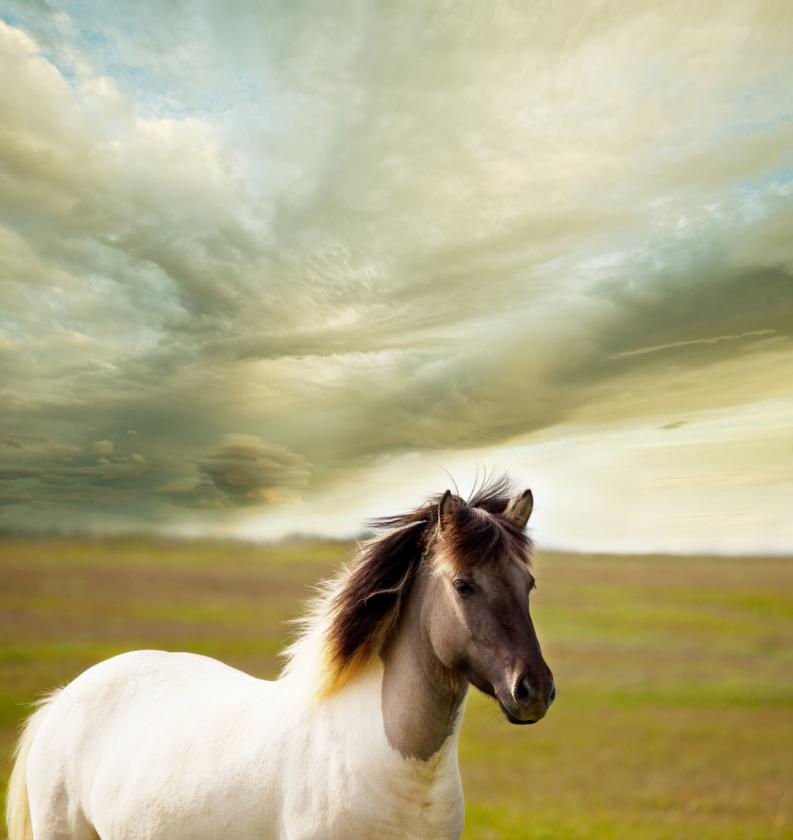 It
has been over a thousand years since people first learned to tame wild horse
and turned them into domestic animals. Since then hundreds of new breeds were
discovered and developed. Nowadays, equines are classified by many different
factors: origin, type, group they belong to, physical characteristics.
It
has been over a thousand years since people first learned to tame wild horse
and turned them into domestic animals. Since then hundreds of new breeds were
discovered and developed. Nowadays, equines are classified by many different
factors: origin, type, group they belong to, physical characteristics.
It is not a ‘either-or’ process but a very complex science.
There are many different categories and classes that horses are divided into. Different breeds of horses have their own unique characteristics such as color, gait, temperament.
Below we are going to discuss equines by their characteristics and group belonging.
Characteristics
1.Horse Colors
Like other animals, horses are also bred for the purpose of beautification. From the color of the coat to the pattern on their skin – you can obtain any of these by breeding horses of the desired color and pattern together.
Some of the color breeds are appaloosa, pinto, buckskin, and palomino.
2.Type
There are various ways in which horses are used depending on their breed. For instance, you would not want to use a cold-blooded horse for sports. These perform better in leisure activities, walking, and public rides.
Just as people use different breeds for their own transportation needs, farming and carrying loads, similarly, there is a wide range of horses used specifically for sports and performances. Those equines get special training to perform in a particular way such as for racing, polo, circus.
3.Gait
Breeding horses takes a very important place in acquiring an equine with greater, better performing qualities. Gait is one of such qualities that can be altered through breeding.
Therefore, it is logical that different breeds have different horse gaits which, if bred together, will transfer naturally, causing the foals to carry on genes and qualities of both, and grant better movements and more naturally looking artificial gaits. Saddle bred, Tennessee Walking Horse and Icelandic are just a few examples to name.
4.Temperament
You can describe horses’ temperaments and divide them into three basic categories: cold-blooded, warm-blooded, and hot-blooded. Horses that are from the Arab region are hot-blooded. For example, oriental horses like Akhal-Teke and Turkoman horses. Hot-blooded horses are mostly suitable for sports due to their high speed and sharpness.
Similarly, horses from European region are warm-blooded. A good example is Dutch Warmblood horse. Cold-blooded breeds are heavier and much more muscular.
They are also quieter, calmer and very patient. Clydesdale and Belgian horses are usually used as carriage horses for transporting goods.
Groups
1.Heavy Horses
These horses are best suitable for regions with severe climate conditions as they are bulkier and broader. They can be found in the northern hemisphere and fall in the category of cold-blooded horses.
Since they possess greater energy and are physically powerful, they are good fit for lifting heavy loads. Also, these breeds were used in wars and industrial farming.
Although these horses are much slower than the rest of their equine counterparts, they have greater potential than any other horse breed.
2.Ponies
These are short heighted horses with a hand of 14.2 and smaller. Also, their manes, coats and tails are thicker. They tend to be the most intelligent and independent horses out of the entire equine family.
3.Light Horses
Since these horses are lighter, their speed is faster. That is the reason why they are commonly used as riding horses. Mostly, these horses belong to the Arabian region and considered as one of the oldest breed. They can be hot blooded or warm blooded as well.
Now you have a starter list of groups and characteristics of the equines of the world. It is important to know specifics of your own horse and its breeding history to make all the necessary adjustments to diet, horse grooming needs and daily exercises.
Look after your equine’s health by using horse supplements from LV Performance to ensure great performance and longevity.


